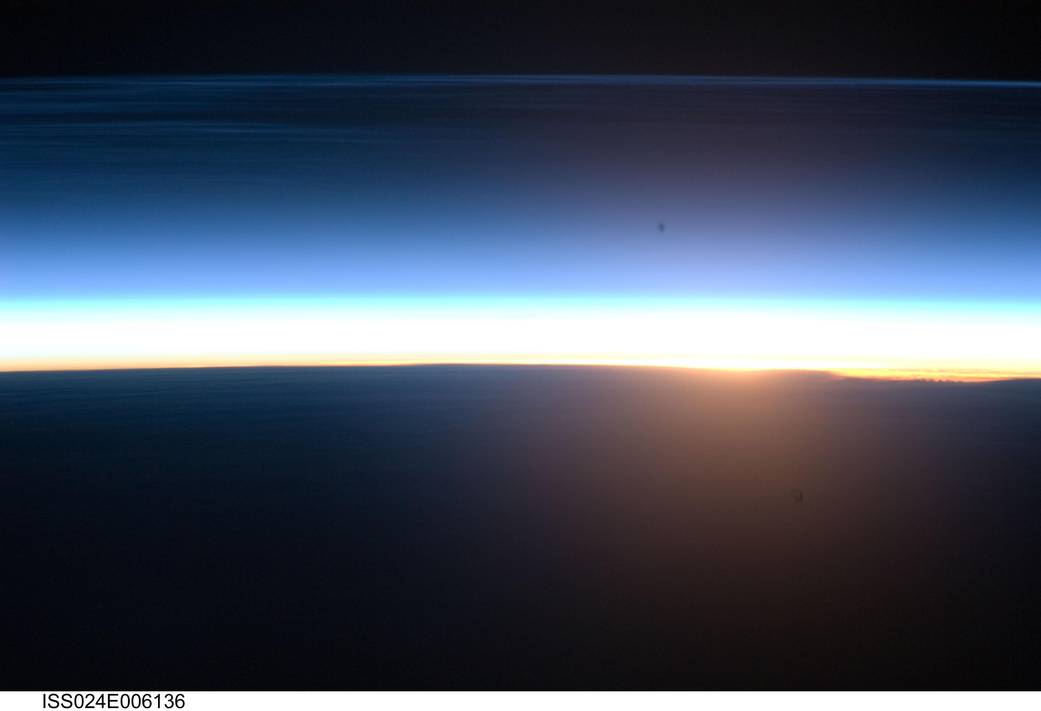
The Expedition 24 crew on the International Space Station photographed this image of polar mesospheric clouds illuminated by an orbital sunrise. Polar mesospheric, or noctilucent (“night shining”), clouds usually are seen at twilight, following the setting of the sun below the horizon and darkening of Earth’s surface. Occasionally the station’s orbital track becomes nearly parallel to Earth’s day/night terminator for a time, allowing the clouds to be visible to the crew at times other than the usual twilight because of the station’s altitude.
This photograph shows polar mesospheric clouds illuminated by the rising, rather than setting, sun at center right. Low clouds on the horizon appear yellow and orange, while higher clouds and aerosols are illuminated a brilliant white. Polar mesospheric clouds appear as light blue ribbons extending across the top of the image. The station was located over the Greek island of Kos in the Aegean Sea (near the southwestern coastline of Turkey) when the image was taken at approximately midnight local time. The orbital complex was tracking northeastward, nearly parallel to the terminator, making it possible to observe an apparent “sunrise” located almost due north. A similar unusual alignment of the ISS orbit track, terminator position and seasonal position of Earth’s orbit around the sun allowed for this striking imagery of over the Southern Hemisphere.Image Credit: NASA
























